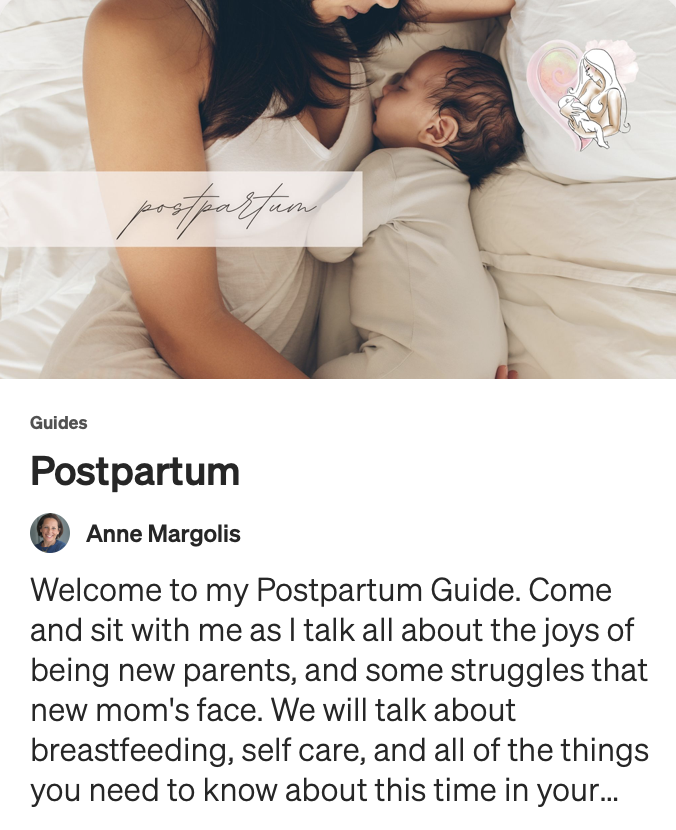What is a VBAC?
A VBAC is a vaginal birth after cesarean.
If a woman has had a cesarean and wants to plan a vaginal birth for her next, it would be considered a VBAC, and the number after it depends on how many prior cesareans there were.
What are the chances of having a successful VBAC and who is a good candidate for a VBAC?
The stats range that 60-80% of women, who have had previous cesareans, are candidates for a successful VBAC. In actuality, most healthy pregnant women carrying healthy babies are candidates.
The chances of a successful VBAC are higher if a woman is using a midwife, even higher in free standing birthing centers and home settings.
Going to a hospital and working with an OB/GYN with high cesarean rates, will increase the likelihood that a woman will have another cesarean.
In some hospitals, there are a lot of restrictive procedures, like continuous electronic fetal monitoring, confining a laboring woman to lay in bed, not allowing her to eat or drink, routine IVs and time limits, which increase the risk of a cesarean.
There are many benefits to a VBAC, that are physical, emotional, mental, and spiritual.
These are only a few important benefits on the long list:
No risks from major abdominal surgery. This is huge. Unfortunately, a cesarean can lead to trauma to the internal organs or reproductive tract, risk of hemorrhage, complications with scar tissue, long term post operative pain, wound infection, blood clots, stroke, and possible respiratory problems for the baby. High rates of cesarean section contribute to high rates of morbidity and mortality – and this is occurring in modern countries such as the US, which ranks among the bottom of them in terms of outcome stats.
Easier postpartum healing and recovery.
Baby receives needed bacteria for optimal health, from mother when passing through the vaginal birth canal.
Breastfeeding may be more successful
No potential harm to future fertility.
Feeling more positive about the birth experience
Increased sense of empowerment.
More involvement of family and support people.
Less risk of postpartum depression and emotional birth trauma.
What is the main risk of a VBAC?
The risk of separation of the one prior uterine scar is approximately 2 in 1000 VBACs, but often it is a mild superficial dehiscence (slight separation of some layers of the surgical wound) that has no clinical significance and does not impact the health of mom or baby. The risk of severe life-threatening emergency from a partial or complete uterine rupture of all the scar layers is significantly lower – a highly unlikely occurrence, significantly less than 1 %., 1.36% after 2 cesareans, slightly higher after three cesareans, with a higher comparative maternal and newborn morbidity with each repeat cesarean - but still in perspective, low, and depends on a variety of factors related to your individual situation. The main risk is of a VBAC is this rare catastrophic rupture of the previous uterine incision. This rare total disruption of the uterine scar risks both the mother and her baby, and can lead to catastrophic outcomes. It cannot be ignored and must be monitored for appropriately; but it cannot be exaggerated or make the risk of repeat cesarean less alarming. Frank uterine rupture is often mistaken for more common mild separation of the previous uterine scar without consequence, happens in less than 1% of all pregnancies. Even ACOG released guidelines that it’s reasonable to consider women with two previous low transverse uterine incisions to be candidates for trial of labor and to counsel on the combination of other factors that affect their probability of achieving successful VBAC.
But, it is getting harder to find a provider to attend to your desired vaginal birth after one cesarean let alone after two or more. It is still possible, and you have the right to decline another cesarean, but it is ideal for you to find a provider and setting most supportive to birth YOUR way safely.
Although every decision has risks, a VBAC is a reasonable, appropriate and safe option. If a woman panning a VBAC decides to give birth at home, I highly recommend working with a well trained and experienced midwife and consider the distance to a hospital (30 minutes or less driving time is ideal).
There are risks and benefits to every kind of birth and in every setting. I provide women with evidence based information, encourage each family to dig deep and look at the pros and cons to having a VBAC in a hospital setting, free standing birthing center or home, vs a routine cesarean and have informed consent for her birth.
Are there benefits to a cesarean?
A planned cesarean is in a controlled environment, and some women find great comfort in that knowing. Perhaps a woman has had a previous traumatic, long labor the first time and they just don’t want to go through that experience again. Some women are very anxious about that and they just feel safer knowing they will have another cesarean.
I take that seriously, because she won’t labor well if she doesn’t feel safe.
Like I mentioned before, the serious risks for a VBAC can be often prevented, treated or transferred to surgical care in time, with a skilled midwife or obstetrician who is attending to the laboring women, aware and mindful of the symptoms that lead up to that.
Thankfully some hospitals are now at least allowing more time for baby to get the cord blood from the placenta, skin to skin bonding, and her partner or main support person in the operating room. Some hospitals and providers are performing “gentle cesareans” – cesareans that are family and woman centered, and try to provide the environment of a natural birth as much as possible. This is a wonderful attempt to restore humanity to birthing in the operating room
In most cases, a VBAC is a safe option.
I share the opinion of many concerned with improving maternity care and reducing our rising rates of maternal and newborn death and serious health consequences from the interventions in childbirth, that a woman should not be forced to have a major surgery against her will, rather provided research and empowered to make her own decision, considering she is having a healthy AAOG removed the previous unreasonable restriction requiring immediate availability of a surgical staff for an emergency cesarean, as most hospitals around the country, let alone free standing birth centers and home settings, do not meet this criteria. Most hospitals are not able to have a surgical staff at all times and cannot perform an emergency cesarean in under 30 minutes.
Despite this, research is showing that far too many obstetricians and the midwives they back do not offer VBACs after one cesarean, let alone more. They routinely recommend repeat cesareans because they may fear law suits, succumb to scheduling pressures, have restrictive hospital or malpractice insurance policies, and/or feel pressured to uphold certain standards among their colleagues who are not supportive of VBAC. The hands of a midwife whose collaborative obstetrician and hospital do not support VBAC can often be unnecessarily tied as well for these reasons. Most repeat cesareans are not actually medically necessary, and are commonly recommended due to various non-medical reasons. This is very concerning.
What also concerns me is that the risks of a VBAC are magnified in conversation with women, while the risks of a repeat cesarean are downplayed, so women may feel forced, afraid and powerless.
I want women to feel like they have a voice, as they do have a legal and medically ethical right to autonomy over their bodies, their births and their baby’s.
Some women who want to VBAC have limited options and local doctors in the area are only offering cesareans. Some feel they have no option other than having an unattended homebirth, or labor alone at home until the last minute without any monitoring, or not be truthful with their providers about their previous cesarean birth – all of which can increase the risks for her and her baby.
A trained and experienced midwife who is continuously with the woman in active labor, can detect concerning signs and symptoms before they can become a crisis, and she be transferred and treated in time to save her and her baby’s life and heath. A midwife wears many hats, one of which is protecting the space so the natural process of birth can proceed with ease and grace, and another is a lifeguard – to know when and how to intervene to prevent problems or manage emergencies. There are many wonderful obstetricians supportive of VBAC who have this training and style of practice as well; they are just harder to find.You have the right to decline the repeat cesarean, and find a more supportive skilled provider at home. There are midwives and OBs who do it and post about it around the globe. It is worth every penny to even travel quite a distance to a practice who honors your choices. You REALLY have to want it, and you must prepare as best you can to set yourself up to succeed, like it’s your Mount Everest to climb, to have your healing, redemptive beautiful healthy birth.
Last tips:
If a woman knows she wants to have another baby, I would start with research and education. Ask yourself: “What do I want and why?”
A woman should get the support she needs. Most women who have had one or more prior cesarean births have issues they need to discuss and heal from. One of my dedications and areas of expertise is creating space so a mom can debrief, process and recover from her previous upsetting or traumatic birth experience, as well as plan for a better one next time around. Schedule a coaching call with me for more personal guidance if you need.
I tell mamas to do what they can to educate, prepare and empower themselves in a whole different way than last time as I want them to succeed, build their circle of support, and include in their birth team advocates to speak for them when they are in the heat of labor. I tell them to prepare for a natural vaginal birth. The mind, body, heart and spirit can prepare for a natural vaginal birth - and a deeply positive, beautiful and empowering one. Yes, it takes work and practice, but it is worth every penny, every effort and amount of time you put in, if this is the birth experience you want and dream about. This is one of my passions and main focus of my online childbirth prep course Anne’s Guide to Pregnancy, Birth and Postpartum - sold separately or bundled together in adjunct to my Natural Birth Secrets books 2nd edition and Trauma Release Formula 2nd edition if you need help previous healing birth trauma - both extensive but very different resources that compliment each other to heal and prepare for your different next birth.
I also recommend hiring an awesome doula, as those who have a doula are less likely to have a cesarean.
A doula is amazing because they offer the mothering comfort and support that our ancestors had. When women would give birth in their tribe or village, and they were surrounded by mothers, aunts, sisters, grandmothers, and the other women of their community, they received that mothering support by women who were comfortable with birth and relaxed around it. Fear has no place in birth, and a doula provides needed calm and loving support.
Remember, In the end it’s not in our control, and we let go and surrender,
If you do all of these things and end up having a cesarean, it’s not a failure. There is no failure in birth. It is a birth, a belly birth, and it’s the birth of your baby and you as a mother. It is the birth of your family and your partner as a parent. Stay present, stay involved and keep a positive mindset. Focus on the blessing, that you did all that you could, and thankful for modern medicine, which saved you and your baby’s life and preserved health. Also, you can ask for a gentle cesarean, which restores humanity to the operating room by doing such things as allowing your support people in with you, enabling baby to emerge from the incision simulating as much as possible a vaginal birth to help baby clear his/her own lungs, enabling you to participate by lowering the drapes so you can see your birth, giving you sterile gloves to receive your baby, optimal umbilical cord clamping so baby can benefit from the cord blood, encouraging immediate skin to skin bonding and early breastfeeding.
Healing can occur afterwards, and may take time and lots of support. But there is no place for shame and negative self judgement here.




























